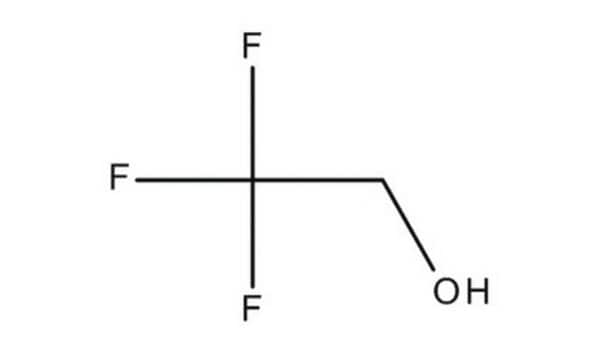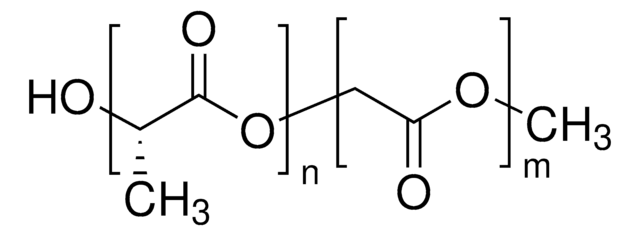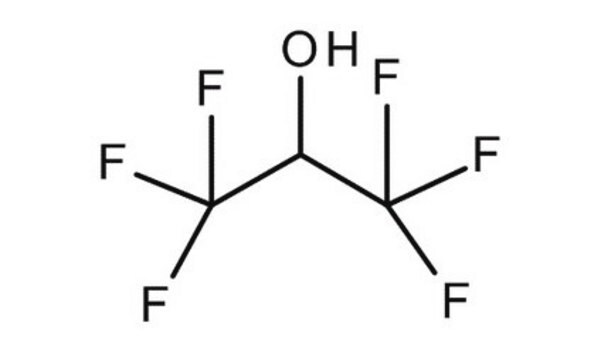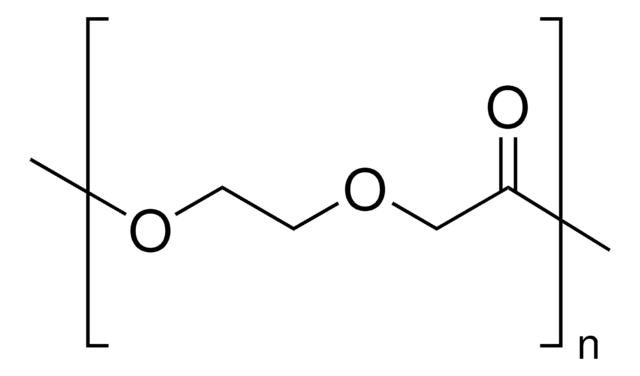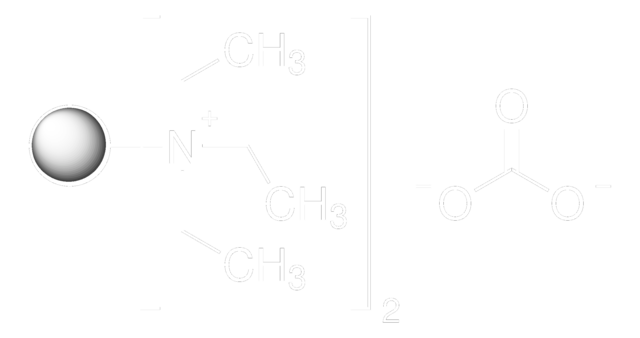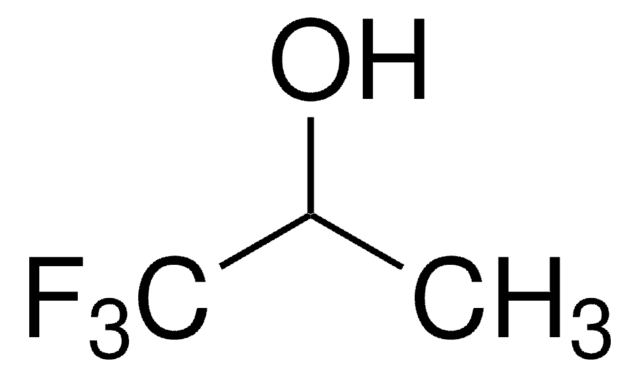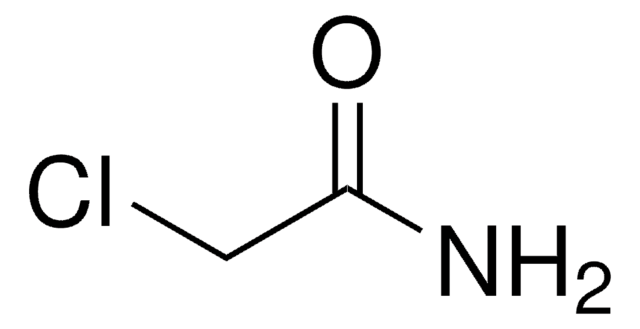Kluczowe dokumenty
96924
2,2,2-Trifluoroethanol
BioUltra, for molecular biology, ≥99.0% (GC)
Synonim(y):
Trifluoroethyl alcohol
About This Item
Polecane produkty
klasa czystości
for molecular biology
gęstość pary
3.5 (vs air)
ciśnienie pary
70 mmHg ( 25 °C)
linia produktu
BioUltra
Próba
≥99.0% (GC)
Formularz
liquid
temp. samozapłonu
~896 °F
granice wybuchowości
42 %
zanieczyszczenia
DNases, none detected
RNases, none detected
insoluble matter, passes filter test
phosphatases, none detected
proteases, none detected
współczynnik refrakcji
n20/D 1.3 (lit.)
bp
77-80 °C (lit.)
mp
−44 °C (lit.)
gęstość
1.373 g/mL at 25 °C (lit.)
ślady kationów
Al: ≤0.5 mg/kg
Ba: ≤0.1 mg/kg
Bi: ≤0.1 mg/kg
Ca: ≤0.5 mg/kg
Cd: ≤0.05 mg/kg
Co: ≤0.02 mg/kg
Cr: ≤0.02 mg/kg
Cu: ≤0.02 mg/kg
Fe: ≤0.1 mg/kg
K: ≤0.5 mg/kg
Li: ≤0.1 mg/kg
Mg: ≤0.1 mg/kg
Mn: ≤0.02 mg/kg
Mo: ≤0.1 mg/kg
Na: ≤1 mg/kg
Ni: ≤0.02 mg/kg
Pb: ≤0.1 mg/kg
Sr: ≤0.1 mg/kg
Zn: ≤0.1 mg/kg
λ
neat
absorpcja UV
λ: 260 nm Amax: ≤0.03
λ: 280 nm Amax: ≤0.02
ciąg SMILES
OCC(F)(F)F
Zastosowanie
sample preparation
InChI
1S/C2H3F3O/c3-2(4,5)1-6/h6H,1H2
Klucz InChI
RHQDFWAXVIIEBN-UHFFFAOYSA-N
Szukasz podobnych produktów? Odwiedź Przewodnik dotyczący porównywania produktów
Zastosowanie
Inne uwagi
Hasło ostrzegawcze
Danger
Zwroty wskazujące rodzaj zagrożenia
Zwroty wskazujące środki ostrożności
Klasyfikacja zagrożeń
Acute Tox. 3 Inhalation - Acute Tox. 3 Oral - Eye Dam. 1 - Flam. Liq. 3 - Repr. 1B - STOT RE 2 Inhalation
Organy docelowe
Blood
Kod klasy składowania
3 - Flammable liquids
Klasa zagrożenia wodnego (WGK)
WGK 1
Temperatura zapłonu (°F)
86.0 °F - closed cup
Temperatura zapłonu (°C)
30 °C - closed cup
Środki ochrony indywidualnej
Eyeshields, Faceshields, Gloves, type ABEK (EN14387) respirator filter
Wybierz jedną z najnowszych wersji:
Masz już ten produkt?
Dokumenty związane z niedawno zakupionymi produktami zostały zamieszczone w Bibliotece dokumentów.
Klienci oglądali również te produkty
Nasz zespół naukowców ma doświadczenie we wszystkich obszarach badań, w tym w naukach przyrodniczych, materiałoznawstwie, syntezie chemicznej, chromatografii, analityce i wielu innych dziedzinach.
Skontaktuj się z zespołem ds. pomocy technicznej